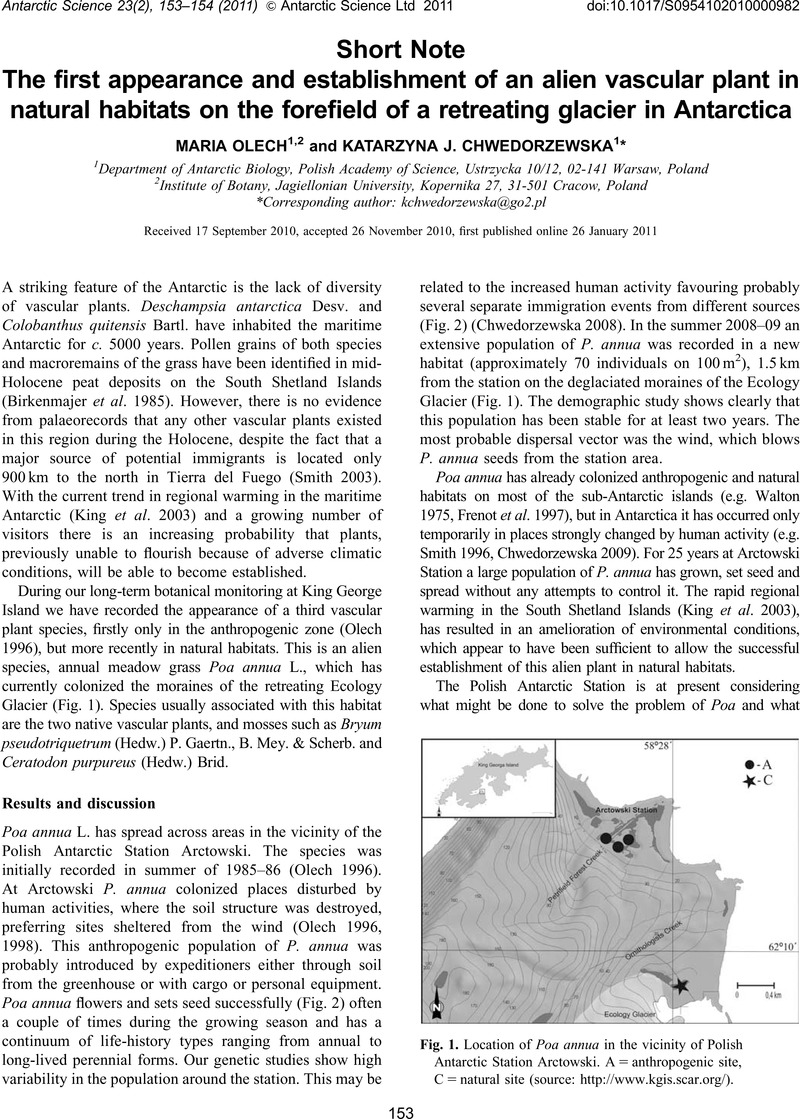Frenot, Y.,
Gloaguen, J.C. Trehen, P. 1997. Climate change in Kerguelen Islands and colonization of recently deglaciated areas by
Poa kerguelensis and
P. annua.
In Battaglia, B., Valencia, J. &
Walton, D.W.H.,
eds. Antarctic communities: species, structure and survival.
Cambridge:
Cambridge University Press,
358–
366.
Google Scholar 